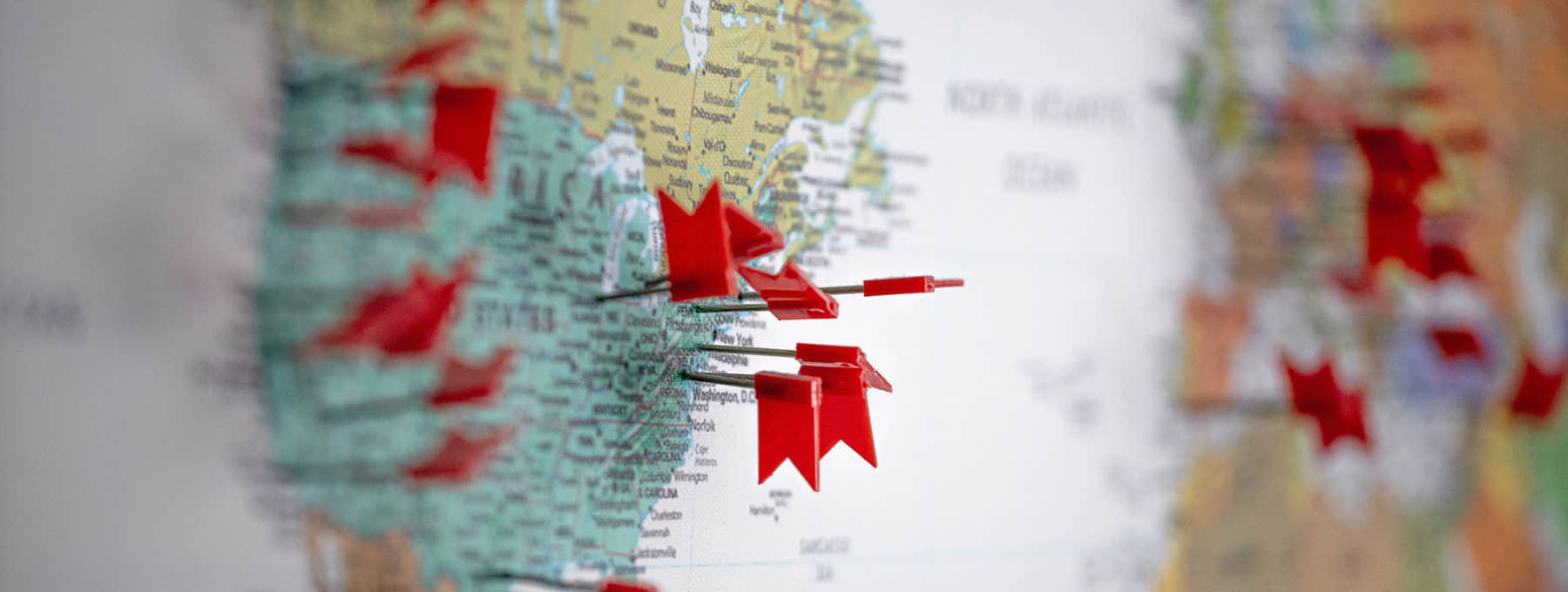
9th September 2020
Modern Teaching Methods From Across The Globe
The main principle of teaching, imparting knowledge to students in order to prepare them for an independent and rewarding career and life, is the same across the world. Teaching practices and methods can vary vastly – we’ve covered some of the most popular countries for teachers to work in here! There’s more information about the different categories of teaching methods in our blog.
What Are The Most Prevalent Teaching Methods Across The Developed World?
 |
SCANDINAVIA |
Scandinavians have a reputation for their innovative and successful education system that enables children to flourish in more natural and less exam-focused way that their European counterparts. Compulsory education doesn’t start until a child is 7, and they aren’t subjected to mandatory exams until they reach 16. Students of all abilities are taught together and it’s suggested that this may contribute to the smallest gap between the highest achieving students and the lowest. Nordic schools are big on gamification, technology and coding with brand-new technology a familiar sight all over schools. Teaching doesn’t just take place in a traditional classroom, teachers are encouraged to use the outside in their lessons and many schools feature flexible learning spaces.
 |
USA |
Teachers in the US have a focus on the core subjects, with the goal of all pre-16 education to pass exams and land a place in college. This can mean that teacher-led learning takes precedence over allowing students to explore topics in their own way. Although not true of all schools, funding to the arts has been cut in recent years in schools in the US, meaning the majority of Popular teaching methods vary widely, with the curriculum being state-mandated there can be significant differences in teachers preferred teaching styles. In more traditional and conservative states across ‘Middle America’ teaching methods haven’t changed much for many students over the last 25 years (although there are several notable exceptions to this rule!), whereas in progressive states such as Florida, New York and much of the East Coast, students can expect reformed education policy that encourages more high-tech, student-led learning.
 |
CHINA |
The Chinese’ teacher-led methodology nurtures some of the best mathematicians in the world with a heavy focus on learning the concepts and logic behind problems. There’s also a completely different attitude towards teaching and learning – China’s One-Child policy has meant that a heavy expectation is placed on the single child of a family, and educational success rests almost entirely on passing the College Entrance Exam. Lessons are mainly teacher-led and Western teachers might be surprised by the discipline shown in classes by even the youngest pupils – the lecture style of the majority is hard to visualise working in any other culture.
 |
EUROPE |
The majority of European schools have a focus on passing various exams throughout the compulsory education years, with the ultimate goal being acceptance to University or College. Popular teaching methods vary widely across Europe. In France, for example, there’s a growing movement of technology-centric learning and more discussion, projects and pupil-led teaching. School hours are considered long compared to the rest of the world with some students in France, Germany, Switzerland and Spain expected to attend school on Saturday mornings. Significant investment in the education sector across most EU countries has led to further research and trials around teaching methods, with European school-leavers considered among the best educated in the world and many schools offering students a combination of teaching methods with a focus on the pupil as an individual.
 |
UK |
Teaching in the UK has undergone somewhat of a transition in the last decade. More traditional teaching methods are seen as old-fashioned, with a move towards an increasingly holistic environment for learning, especially with the introduction of Free Schools which are allowed to set their own curriculum. Parents can choose to send their child to schools that have specific vocational specialisms through the Academy system, and teachers have more options than ever before in how to impart the curriculum to their charges. In classrooms, learning is a mixture of discussion games, practical work and projects, with the majority of teachers adverse to spending long periods of time at the blackboard delivering instruction. Testing is regular, with students subject to both ongoing assessment and periodic exam-like testing to determine progress. All students aim towards passing exams at 16 that
 |
AUSTRALIA |
Australian schools are undergoing a period of transition, moving away from the traditional teaching-led teaching model to a more pupil-led classroom. Curriculums are based around children learning best when active, with a significant move towards utilising technology in the classroom and a particular focus on ‘gamification’, applying elements of gaming such as quests, levels to the learning process. Schools are also tailoring learning opportunities to individuals’ preferred learning styles, such as creating visual opportunities for visual learners, etc.
 |
CANADA |
The Canadian education system places the responsibility for deciding curriculum and testing on individual states. This means that education systems can vary widely across the country. Traditionally, pupils were offered two streams of learning, academic and general, which covered more vocational subjects, and lessons were teacher-led with traditional classroom setup. In recent years, the Canadian government has worked to create a collaborative body between states that’s led to the introduction of new curriculums, in particular in British Columbia. The new curriculum prizes concept-based learning with a focus on literacy and numeracy whilst supporting deeper understanding of problem-solving. Classrooms across Canada have been moving towards a more flexible and holistic approach to learning – taking their cues from more modern teaching methods being implemented across the world.
What Type Of Teaching Is Most Effective?
The majority of developed countries have seen a significant shift towards a more pupil-centric, tech-led system of imparting knowledge. Across the world, traditional teaching methods are being cast aside in favour of more modern and effective strategies with a view to developing deeper understanding and critical thinking abilities in pupils. There is no single metric that can analyse the success of a country’s education policy – as teaching methods evolve and new research is published, education professionals must make their own judgements on the most effective methods to implement in their own teaching. If you want further reading, there’s some fantastic research and information on traditional teaching vs. newer methods here.
Book a CCS Consultation
Our East Anglia team are on hand to support your school or MAT with bespoke recruitment solutions, arrange a consultation with the team today.
Book a timeRecommended for you
Why Canadian graduates should consider teaching in the UK
Working internationally is considered a once in a lifetime opportunity for many,...
- Become a Teacher
- •
- 3 Min Read
What is the UK Graduate Visa?
What is a Graduate Visa? A graduate visa is a post-study visa...
- Become a Teacher
- •
- 3 Min Read
International Relocation Payment
What is it? The international relocation payment (IRP) is a single payment...
- Become a Teacher
- •
- 3 Min Read

